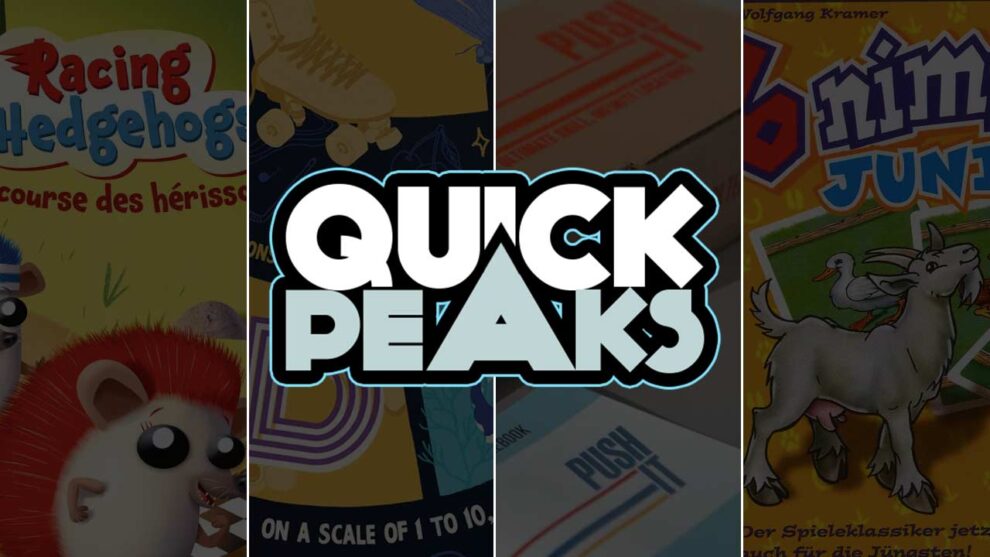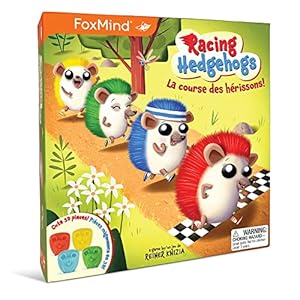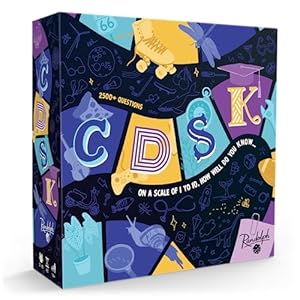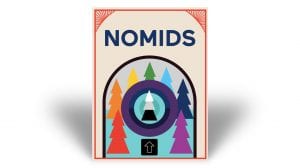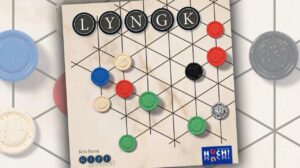Racing Hedgehogs – Tom Franklin
Four plastic hedgehogs (red blue, green, and yellow) are placed at the start of a winding track, with spaces marked -1, 0, 1, 2, and 3. Cards of matching colored hedgehogs are dealt out with either one or two spaces indicated. On a turn, you’ll play a card from your hand to move a matching colored hedgehog along the track. Once the first hedgehog crosses the finish line, you’ll score based on the remaining cards in your hand. If a hedgehog ends the round on spaces with positive points, you’ll score positive points, based one per movement point on your card. If the hedgehog is on a negative space, you’ll lose negative points based on those same movement points.
Ease of entry?:
★★★★★ – No sweat
Would I play it again?:
★★★☆☆ – Wouldn’t suggest it, but would happily play it
Read more articles from Tom Franklin.
CDSK – Justin Bell
I don’t typically seek out trivia games, but I do love a good party game. I had the chance to play CDSK at Gen Con 2023, but it’s always tough to tell if a game is good when you’re playing games with eight other content creators and drinks are flowing.
The rules for CDSK are simple. Using a board built into the box that looks like a mix of Chutes and Ladders and Trivial Pursuit, teams will move an item pulled from whatever scraps they have in their pockets (most recent game: someone had a crushed red pepper packet from Papa John’s), moving towards the board’s finish line by correctly answering questions. Each question card is in the same format: “On a scale of 1-10, How Well Do You Know _____?” If you say that you know a topic at a level 6, you get a level 6 question that rewards a team with six moves up the board if answered correctly.
I got CDSK back to my house for a recent play. CDSK is still fun, but I was alarmed by how easy the questions are. I think this one example will paint a solid picture of what we are talking about here: Nintendo was the subject, and our team went with level six. “Which famous Nintendo hero debuted as Jumpman in 1981’s Donkey Kong?”
The game gets really hard at levels 8, 9, and 10; in this way, the game really misses on scaling its difficulty. Also, there’s a quick version of the game and a long version, but if you are always getting “hard” questions right, the short game takes 10 minutes if you get three questions right. A strange miss given my love of other Randolph games (Romi Rami, Miller Zoo, and the Linkto games).
Ease of entry?:
★★★★★ – No sweat
Would I play it again?:
★★☆☆☆ – Would play again but would rather play something else
Read more articles from Justin Bell.
Push It – Andy Matthews
“I played this game while I was in a pub in England, and when I got back home I immediately ordered my own copy.” This was the sentence that launched an hour long tabletop battle…over small wooden disks. Push It is a flicking game which comes in a small unassuming canvas bag. But if you calculate fun by weight then Push It, from Push It Games, is worth its weight in gold.
Push It is the tabletop equivalent of bocce ball or horseshoes, in which individual players (or teams) each try to flick their disc from the edge of the table and wind up the closest to the “Push It” disc in the center. If you’re the 1st, 2nd, 3rd, and/or 4th closest, then you get 1 point for each disc in range. But if an opponent interrupts that chain, you’ll have to settle for a lower number of points. Knocking other discs out of the way is fair game, but if in your excitement you knock the Push It disc off the table you lose a point. First to 7 points wins, or if you want a longer game go to 11, or 50 for that matter. You’ll be having so much fun you won’t really care how long you play.
Ease of entry?:
★★★★★ – No sweat
Would I play it again?:
★★★★★ – Will definitely play it again
Read more articles from Andy Matthews.
6 nimmt! Junior – David McMillan
Ever since seeing 6 nimmt! displayed in fascinating, dramatic detail in an episode of After School Dice Club (THE anime every board gamer NEEDS to see), I have always wanted to give the game a try. Alas, it has not happened yet. But, a few years ago, in anticipation of my son being old enough one day to play it with me, I was lucky enough to nab the Junior version for a steal in an auction.
That day has finally arrived. Over the weekend, the family went camping, and 6 nimmt! Junior was one of the games that hit the table.
The concept of the game is simple: there are six types of animals and you’re trying to create rows, of which there are four, containing all six of them in order to collect those cards and add them to your score pile. The trick is, you cannot add an animal to a row in which another copy of that animal already exists (unless that animal already exists in every row). And, you cannot collect the cards unless you are the one that placed the sixth animal.
While I don’t think my 5 year old fully grasped the strategic subtleties of the game, he did grasp the mechanics quickly. But, more importantly, he seemed to be having fun playing it and I know my wife and I had fun with it as well.
Ease of entry?:
★★★★★ – No sweat
Would I play it again?:
★★★★★ – Will definitely play it again


